Balkh – The Passed Past
“I am not a communist. I am a Muslim”
– Khan Agha Arvin
The present day tiny town of Balkh, 30 minutes away from Mazhar e Sharif connected by high speed highway, was before a glorious capital of the Bactrian empire. Today, for the locals, the name Balkh maybe more better translated as pilgrimage sites, where hundreds of holy saints’ mausoleums are located and pilgrims came for blessing and prayers everyday.
One among the pilgrims was Khan Agha Arvin, currently worked as vice director of one of Afghanistan’s most famous high schools, Lycee Istiqlal in Kabul. I met him accidentally in the pilgrimage site of Rabia Balkhi, a great Persian woman poet who died in name of love. Arvin, now 47, offered me to go with him and his colleagues around the old town.
The city walls of Balkh, once walls which protected the great capital of the great empire, now was rubble of history. But for Arvin, the history was still alive. It was here, 12 years ago, when he struggled to defend the truth. 12 years ago, when he was a young commander of 35 years old, he led 400 soldiers in his troop. “I divided my troop into three groups,” said him when the ruins of the city walls reliving his memory, “I put one troop here and the other over there,” said him pointing a post on the wall. The past memory suddenly became a present reality in his mind, while he enthusiastically told his three colleagues about the struggle in the vast battle field. He struggled for Mr. Najib, the communist president who was then slaughtered by the Taliban. “Are you Communist?” I asked him. “No, I am not communist. I am a Muslim,” he answered.
Khan Agha Arvin now was a man in his forties, wearing traditional Afghan dress and his left hand never stopped clacking the tasbih, the prayer beeds. He said he was learning about Islam, learning to be a good Muslim, and now he was in more spiritual life.
He had a very interesting history also. During the communist regime in Afghanistan, he spent some years for education in Moscow, and it was the reason for his fluent Russian. “In all language, the words that you will never forget and should not forget are krasivyi (beautiful) and devushka (girl). I also don’t want to forget those two words,” giggled him. Russians, for him left very deep impressions. The Russian men were as cold as tanks, now smile and very unfriendly. But the women were beautiful and very friendly. He liked the devushka very much.
But past was past. Now he tried to be a good Muslim, learnt deeper about his religion, about the Holy Book, and about spiritual life. He was always deep in his prayers in every mausoleum we visited.
I was with these four men in a car visiting the mausoleums of the holy saints in Balkh. How many saints here? Arvin used the term ‘uncountable’, the description that one couldn’t visit all of the mausoleums just in a day. It was also because traveling in Balkh was not always nice. Most of the roads were unpaved and dusty. The summer heat was also boiling. But pilgrimage is a holy activity to endure the hardships, to revitalize the spirit of the saints. Anyway, in this modern era, Corolla taxi had made our pilgrimage in much leisure way.
The pre-Islamic culture was still alive in deep religious Islamic Republic of Afghanistan. The holy tombs of holy men were believed to have magical power to remove all evil spirits, that people brought their sick relatives to receive miracles from the holy saints. In one of the mausoleums (a newly restored tomb of a local saint), there was a tree that was fully covered by nails. Each person wishing to remove their pain, put a nail on the tree accompanying their prayers. This belief dated before Islam came to Afghanistan and now the culture was mixed with the religion. People didn’t recognize anymore which one was culture, which one was religion.
The tombs of the saints also housed many children. They lived on alms of the pilgrims, like the boys near the mausoleum of Khoja Pasra. These boys were very young and active. When there were no pilgrims, they played wrestling, played with the water pumps, shot the pigeons. But when a group of pilgrims come, the boy developed a certain of strong magnet that they would follow the pilgrims everywhere, sticky until they got some Afghanis for the effort. The caretakers of the holy sites, some old bearded men, were their biggest enemy for these beggar boys. The old bearded may chase after them, throw some stones or sticks to the little boys, and the boys screamed, ran everywhere, frightened.
It was not a male dominated world. There were also many beggar girls, at most 10 years old. They dressed quite well to be beggars. Most were Uzbek ethnics, with their very distinctive Mongoloid feature of slanted eyes. They were also sticky, with very heart-breaking cries, “koko… koko… (uncle… uncle…)” When I looked at those sad slanted eyes with bodies wrapped by such clean and beautiful dresses, I couldn’t stop questioning myself, how these little girls developed the culture of begging. Would they be like the women wrapped in old blue burqas sitting on the roadside during hot days waiting for alms, some 30 years later? Were their mothers also begging for life, like the war widows in Kabul underground? I looked at the eyes of the girls, sadly begging, “koko… koko….” ,which for them had been a repeated rhyme without anymore emotion.
And seeing how they chased after the car, stuck to the window of the car until they couldn’t run anymore, gave me more and more shocks. The cloths of the girls looked very now, and the boy beggars could buy ice creams during the day. They were too young to start the culture of begging. Really, really too young.
And for such young kids, time framd didn’t mean a lot. But not for one of Arvin’s colleagues. We visited a shrine, which he last time visited 40 years ago when he was just a young little boy. He remembered how splendid the site was, and now it remained only some parts of the broken walls, covered by graffiti made by the visitors. “Wars have destroyed everything,” said him. The past of Balkh went away further and further.
It was a hot and dusty day, and I didn’t know exactly how many sties were on their visiting list, as the holy tombs looked never ending to me. One of the tombs was really big that it might house a dozen of bodies. But it was a tomb of one holy man, the Sheish Peighambar (Messenger), if I was not mistaken. All of the information was written in Farsi Arabic script and I had difficulty in reading it.
Among the holy saints, none was as impressive as whome they call as Haji Baba (Baba=old man). The baba went to Mecca by walking, performed his haj pilgrimage there, and came back to Balkh to built the first mosque in Afghanistan. The mosque now was in a ruin, in condition desperately need of protection. The mosque had 9 pillars, so it was known as “Masjid e No Gombad”. The Baba is known as Haji Peyada (Walking Pilgrim), and his site was just next to the ruins of the mosque. At that time, spirituality needed such a big struggle that one needed to walk thousands of kilometers to become a Haji Peyada, but now there were more and more people like us, ziarah ba motor (Motor pilgrims).
It was burning hot. It was Friday. And there was a river. Three enough reasons for swimming. Many boys came from Balkh and nearby city of Mazhar e Sharif to swim in Balkh’s clear water river. I wished I could join them, to relax the evaporating body due to long pilgrimage route (despite of the help of the Corolla motor, a plate of palao, and endless kebabs, plus ice-cooled bottles of Pepsi and Miranda). It was a happy day for the swimmers. But it was the end of life of this poor boy of 23 years old. He was swimming with his companion. For both, it was their first swimming experience, and Balkh river might be not suitable for first timers like them, as dangerous streams were hidden everywhere in the crisp water flow. Both of the guys were drowned. The other boys who swam in the river took away one of the two victims from the water. But nobody knew there were two boys to be rescued. Everybody was just surprised, an hour later, the survived victim said that his companion was still in the water.
When I arrived in the riverside, the boys just managed to find a body from the bottom of the river. It has been more than an hour. The boy with orange sleeveless T-shirt and a short was taken by two boys to the river side and received first aid. The big muscular body looked blue already. I still wished that he would survive.
But life had been ended for him, a very young man of 23 years old, wishing to spend a nice weekend by learning swimming in the river of the historical city, and ended up as tragedy to himself and his family, who might have been waiting for him for weekend family party. It was a tragedy. But the river of this ancient town was known to ask about 10 victims per year.
The past had passed. The recent just recently passed. And the future would also pass soon. Who could predict, what this tiny town, once the center of world’s civilization, would be, after pages by pages of history pass the flowing time.

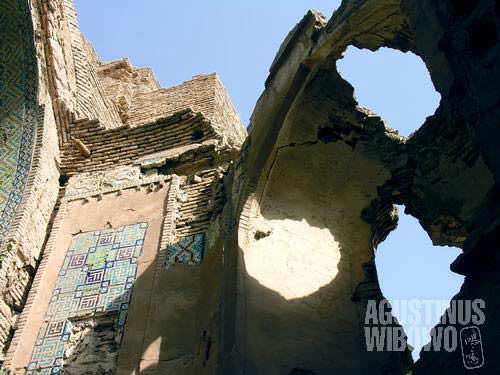
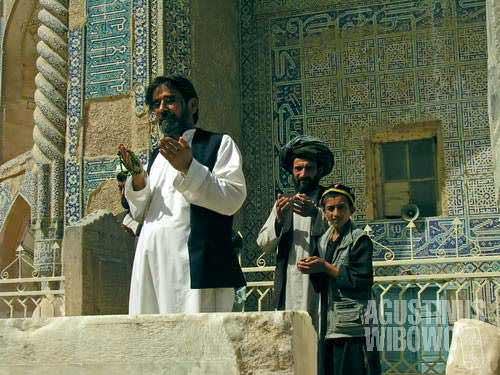
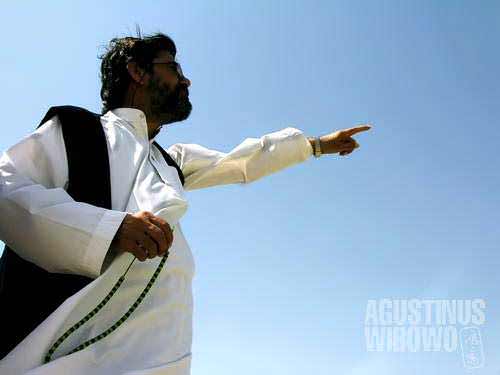
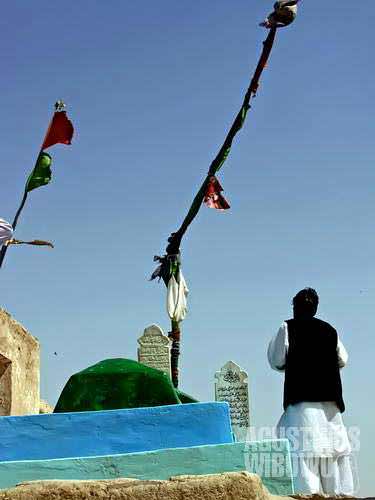

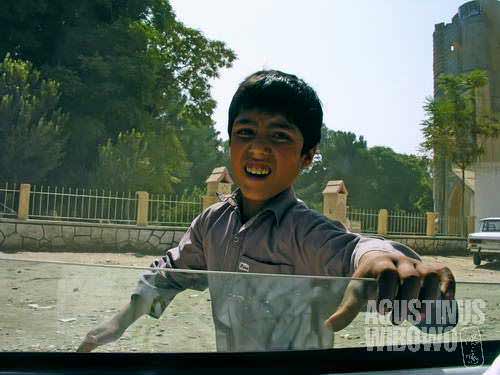
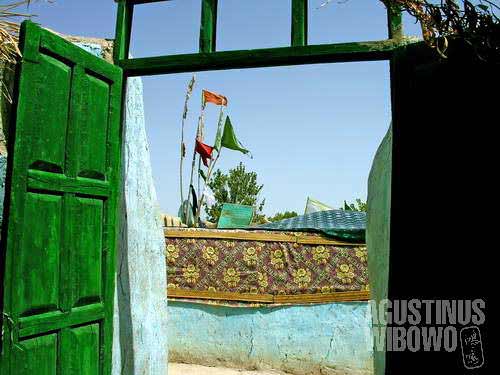

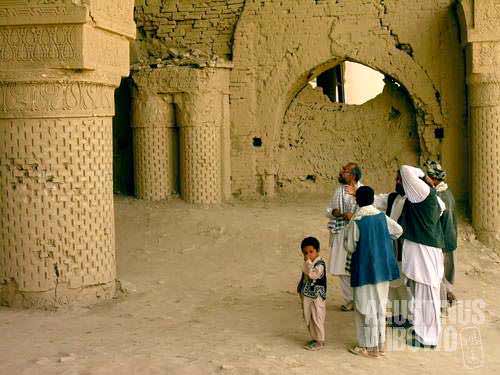
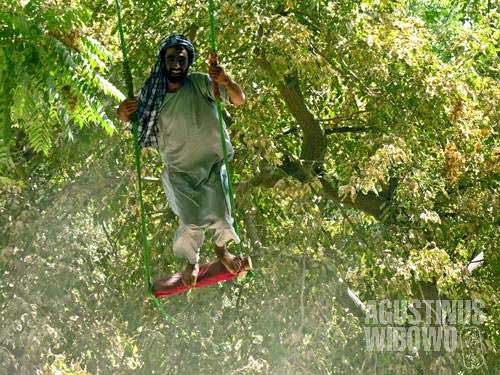
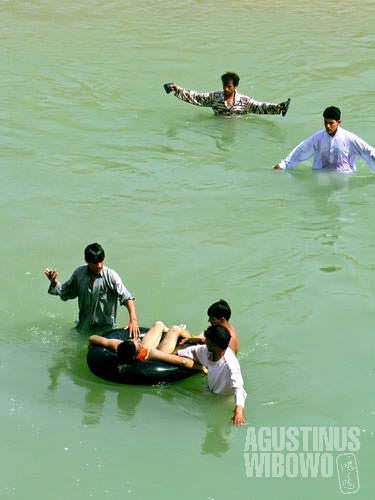

Leave a comment